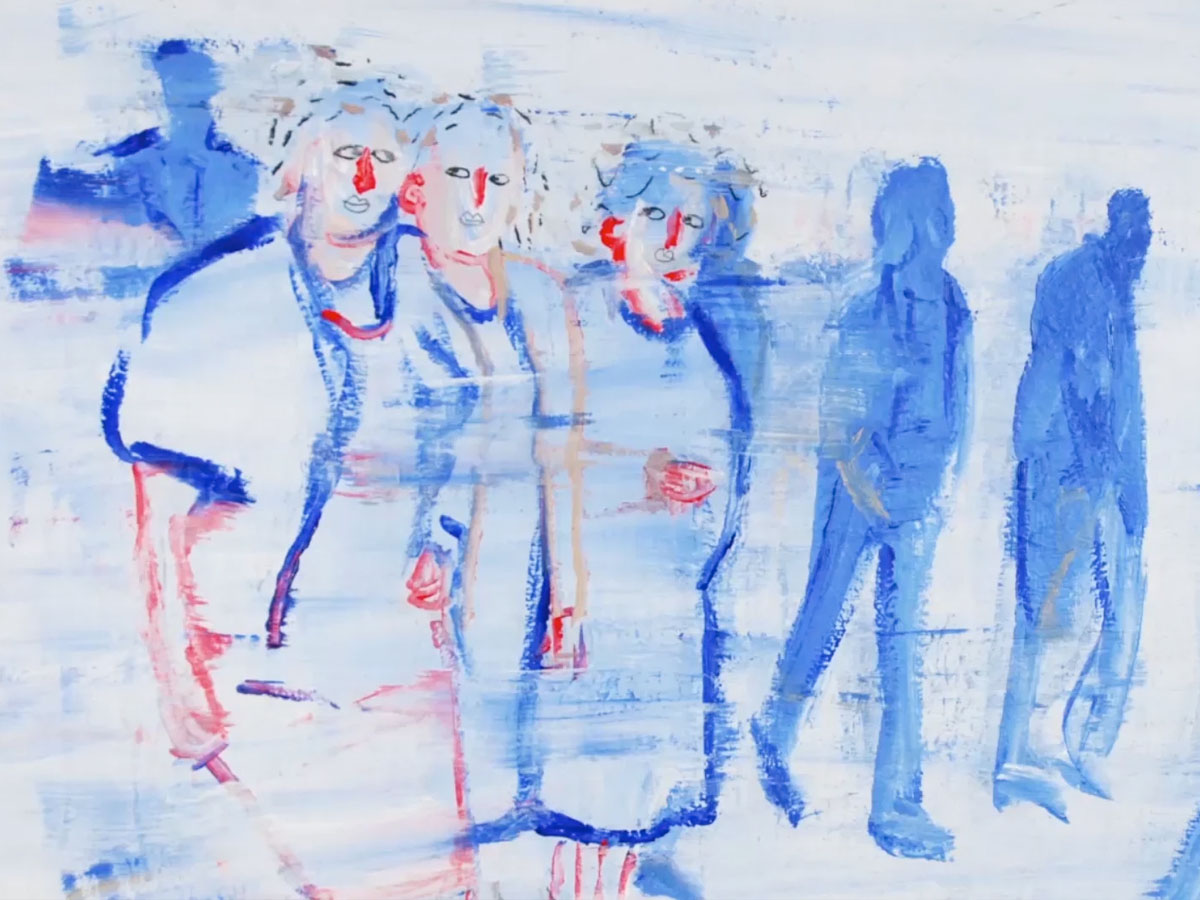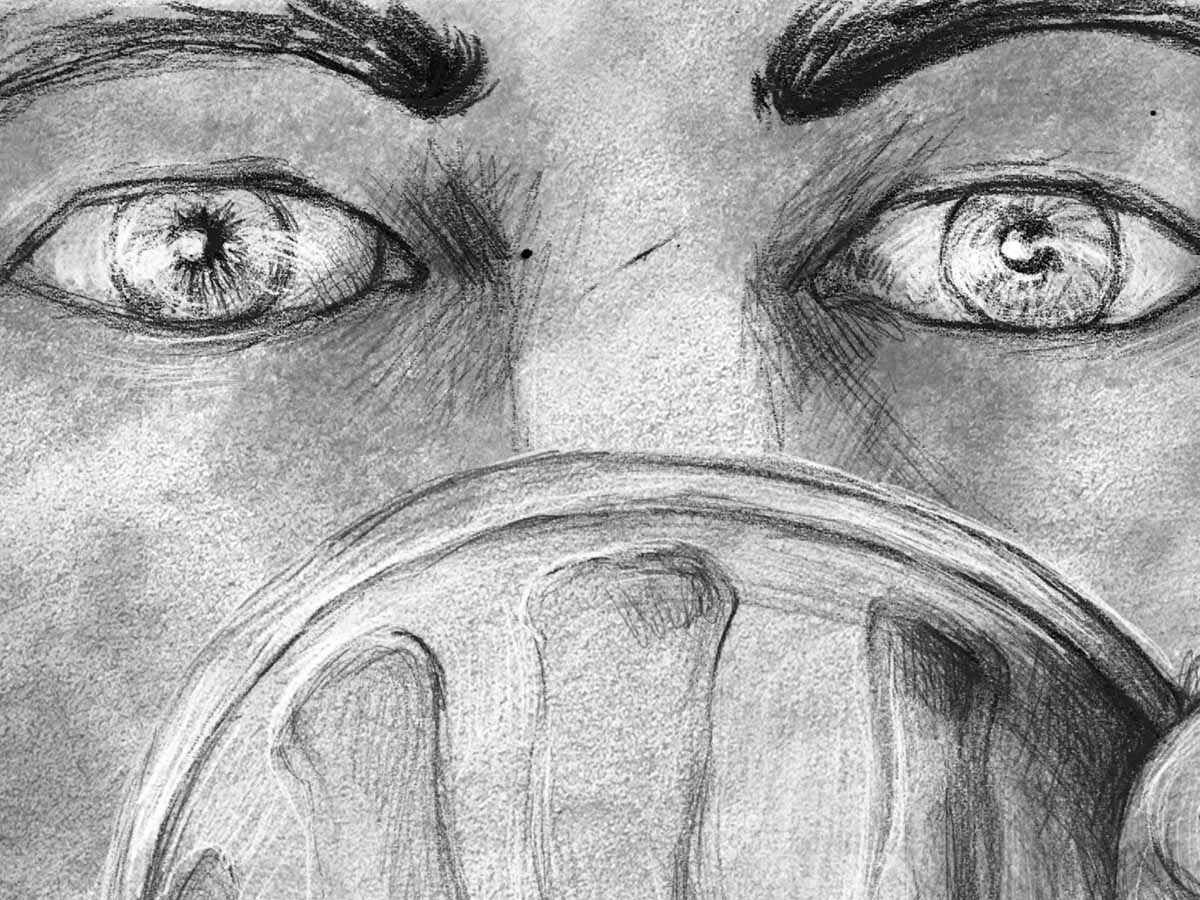
Back and Forth
We all have a different rhythm. This film is a dance about individual rhythms that go together, seem to clash, or just stay separate.
Lisa Foster’s hypnotic animation offers an exploration of human movement in various forms. Bustling swarms of commuters in the city are intercut with tender images of dancing couples gently swaying together in a waltz. By comparing these images, the film suggests a link between how we use our bodies for plain, rudimentary purposes like travelling and how we connect and hold each other. Throughout the film, the borders between these opposing experiences begin to blur as the waltzing figures appear amongst the bustling crowds, provoking the viewer to consider the differences and similarities between both scenes and what happens when separate experiences of togetherness are combined in one environment.
Observing how people walk has been a recurring obsession within animation history and in the wider fields of acting and performance. Learning how to animate a walking figure is considered a foundational test of one’s skill within the studio-based animation system, evidenced in Richard Williams’ influential (and often contested) textbook The Animator’s Survival Kit, a weighty tome, which dedicates many of its pages to characters moving from points A to B. Yet the tradition of depicting movement that Back and Forth draws upon goes beyond simply the technical aspects by connecting with approaches of animation rooted in painting and the fine arts.
The film’s use of paint is integral to exploring speed and motion, blending and scraping the material’s surface texture to mimic the blurred shapes of rushing figures. Also effective is the opaque quality of the film’s colour palette, allowing us to see through the layers of paint, creating the effect of viewing the world behind a misty veil of material, and obscuring the characters in front of our eyes. The effects of diminished vision on painting have roots stretching back to Da Vinci and Rembrandt, suffering from intermittent exotropia (a type of eye misalignment where one eye deviates outward) and stereo blindness respectively, or to Georgia O’Keefe’s experience of living with macular degeneration.
The almost ghost-like figures in Back and Forth are not only visually faint but also have a fragile quality. They are transient and temporary, like the memories and images floating in one’s mind. Blue is an interesting choice of colour for the film’s characters: a sombre, cold shade that evokes something icy or lifeless. Perhaps it also suggests a fleeting image, blue pencils often being used in traditional paper animation to sketch rough outlines. Blue disappears from the drawing once scanned into a computer. In contrast to the ghostly blue shades in the film, flashes of red appear on the faces of the mysterious figures, a bold reminder of the pulsating life that runs through these dancing animated characters.
In her seminal book Art in Motion, historian Maureen Furniss observes that “many animators who began as artists working in the realms of still-drawing and painting have become interested in animation because it offers an opportunity to set their images in motion.” The final moments of Back and Forth cleverly point to this dynamic between moving and still images—the dividing line between painting and animation. The film draws to a halt, reducing the frame rate until we settle on a frame deserving of individual attention, as all frames in films do.
The application of painterly techniques to the kinetic movement of animation also seems rebellious in its rejection of the industrial animation pipeline. The emergence of television coincided with an increased speed in animation production, a shift that trickled down to affect choices of colour, design, and material. Artistic choices were led by the easiest and fastest to produce, almost immediately casting out slower methods. In opposition to this, independent animation was unconstrained by commercial pressure and offered an opportunity for reclaiming the craft of painterly and often time-intensive ways of mark-making.
Many animators focus on the hypnotic qualities of paint colour, which is especially significant when considering that the colouring of animated frames was an underappreciated skill within animation studios during the first half of the twentieth century. Painting animated drawings, often on transparent sheets known as cels, was seen by studio heads as unskilled, mechanical work and was relegated to a workforce of mostly women artists.
Focusing on paint and colour as a central element in independent animation, not merely supplementing other aspects such as characters’ drawn outlines, rectifies its diminished importance in the earlier years of the medium, specifically when made by women. In Back and Forth, we see a similar push and pull between the outline of the characters and the colour of their forms, the black lines used for their hair drawn from the world of the cartoon, while the masterly use of colour and shade reflects painting practices in art history.
Lisa Foster’s film evokes the history of its own medium, but these artistic references do not diminish the pleasures it offers the viewer. Back and Forth is very enjoyable as a mysterious and potent reminder of the power of paint and colour when put in motion.
In a binary universe, a man must hide his true feelings and dance, dance, until he has the courage to defy the norms and reveal who he really is.



